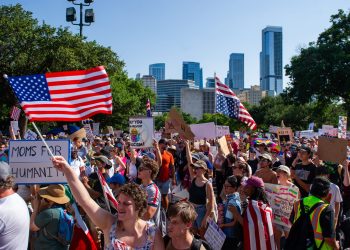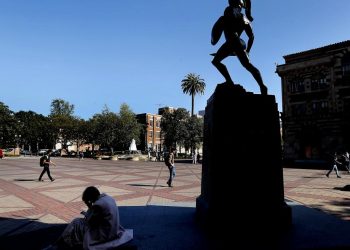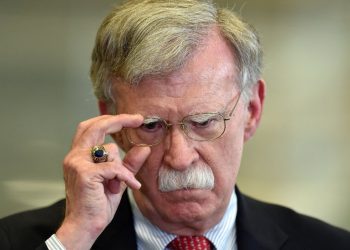Hamas militants stand guard in Gaza on Wednesday. Hamas police and other armed Hamas members have returned to the streets of Gaza since a ceasefire was announced last week. The plan calls for Hamas to disarm and newly formed police to take over in Gaza, but it is unclear when this might happen.
Abood Abusalama/AFP via Getty Images
hide caption
toggle caption
Abood Abusalama/AFP via Getty Images
TEL AVIV, Israel — A fragile ceasefire is in effect in the Gaza Strip, but no one can claim full responsibility for the destroyed territory.
Gaza has no functioning government. Hamas is engaged in street fighting with various Palestinian armed factions. Bulldozers and other construction equipment are desperately needed to clear all the rubble left by two years of war, but they are in short supply.

And in the fields outside Gaza’s towns and villages, Israeli troops keep watch. They hold just over half of Gaza’s territory and periodically open fire when troops think the Palestinians are getting too close to their positions.
Mkhaimar Abusada, a political science professor from Gaza, said the first phase of the Gaza ceasefire overseen by President Trump was welcomed by Israelis and Palestinians.

But, he added, “the easy part has been done. The most complicated issues will be in the second stage of this Trump proposal, that is, the governance of Gaza, the demilitarization of Gaza and also the reconstruction and rebuilding of Gaza.”
Abusada teaches at Al-Azhar University in Gaza but left for Cairo shortly after the war began in October 2023. He wants to return home, but does not plan to return soon because the territory is badly damaged.
The ceasefire plan faces reality
Hamas’s leadership in Gaza has been decimated by the war, and the ceasefire plan calls for the creation of a committee of Palestinian technocrats to rule the territory on an interim basis.
Egypt says there is now a list of 15 Palestinians who could serve on the committee, adding that the names have been approved by Hamas and Israel.

However, no names have been announced, it is unclear when the committee will take over, or what authority it will have to deal with health care, education, water, electricity and coordination with humanitarian groups.
Hamas says it accepts the ceasefire agreement’s stipulation that it will not be part of a future government in Gaza, but it remains to be seen how this will play out in practice. Many officials supported Hamas before the war.
Hamas police in the streets
On the crucial issue of security, Hamas civilian police are already back on the streets. During the war, they had remained largely out of sight to avoid being targeted by Israeli strikes.
The police handle routine tasks such as traffic control. However, Hamas members have also engaged in deadly firefights with Palestinian clans, which are essentially armed gangs.

In a video widely shared on social networks, Hamas accuses eight Palestinians of collaborating with Israel during the war. The defendants were blindfolded and forced to kneel on a busy street. As a large crowd looked on, Hamas gunmen executed the men with a gunshot to the back of the head.
The summary executions raise the possibility that Hamas will reassert its authority and scare off any other groups that challenge it.
Plan for a new Palestinian police force
Egyptian Foreign Minister Badr Abdelatty said his country is currently training some 5,000 new Palestinian police officers for Gaza. Preparations have been taking place in Egypt in recent weeks, although it is not clear when the new force will arrive in Gaza, nor whether Hamas will accept this new authority.
The ceasefire also calls on Hamas to “decommission” its weapons. President Trump said Tuesday that “if they don’t disarm, we will disarm them, and it will happen quickly and perhaps violently.”
Yet the Trump administration also said it would not send U.S. troops to Gaza. The United States sends 200 troops to Israel. But the mission is to help plan, coordinate and monitor Israel’s remote ceasefire, according to senior U.S. officials who spoke on the condition of anonymity to discuss the plans.
The truce agreement also provides for the presence of an international stabilization force in Gaza, although no country has yet committed to sending troops to the territory. Such a mission would carry considerable risks if troops were placed between Israel and Hamas.
The immense challenge of reconstruction
Ten bulldozers have begun clearing rubble from Gaza’s main roads, a small step in a reconstruction effort that will be measured in years, if not decades.
Gaza City Mayor Yahya al-Sarraj said this part of the cleanup efforts was funded by Qatar, a major donor to Gaza for years.
Trump says he expects wealthy Arab states to provide the reconstruction money – which would include Qatar as well as Saudi Arabia and the United Arab Emirates.
The United Nations predicts that the cost of reconstruction in this impoverished territory will amount to a staggering $70 billion. An estimated 90% of buildings in Gaza have been damaged or destroyed.
Israel and Hamas have clashed several times over the past quarter century and parts of Gaza have been rebuilt several times. Reconstruction has been slowed down due to ongoing tensions.
Israel places strict restrictions on what enters the Gaza Strip and often limits or blocks supplies when it claims to have information that Hamas is misusing the materials.
A good example is concrete, an essential ingredient in building homes. Yet Hamas used huge quantities of imported concrete to build a vast network of underground tunnels across Gaza. Israel insists this will not happen again.
Reconstruction over the next six months will focus on several core elements: clearing rubble, providing temporary housing, cash-for-work programs and reactivating the banking system.
Yet even these first steps will require effective government, a sense of stability and sufficient cooperation with Israel so that construction materials can flow steadily into the territory.
NPR’s Anas Baba contributed to this report from Gaza.
For more reporting, analysis and different perspectives on the conflict, visit npr.org/mideastupdates.









